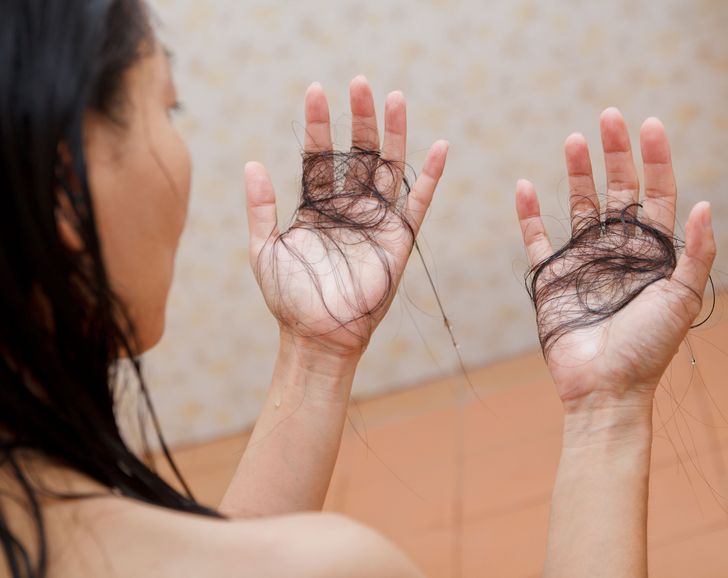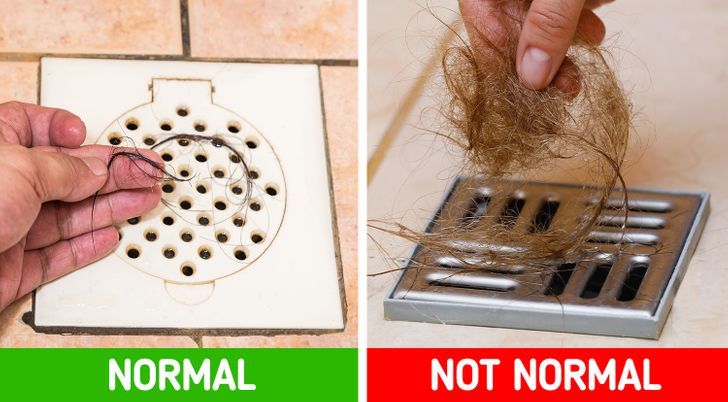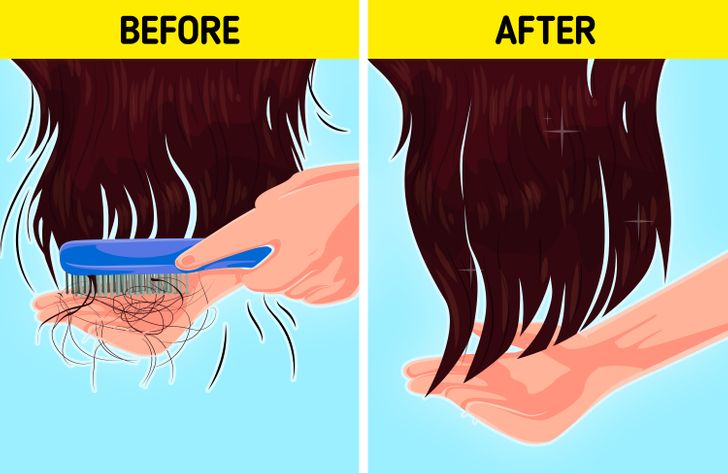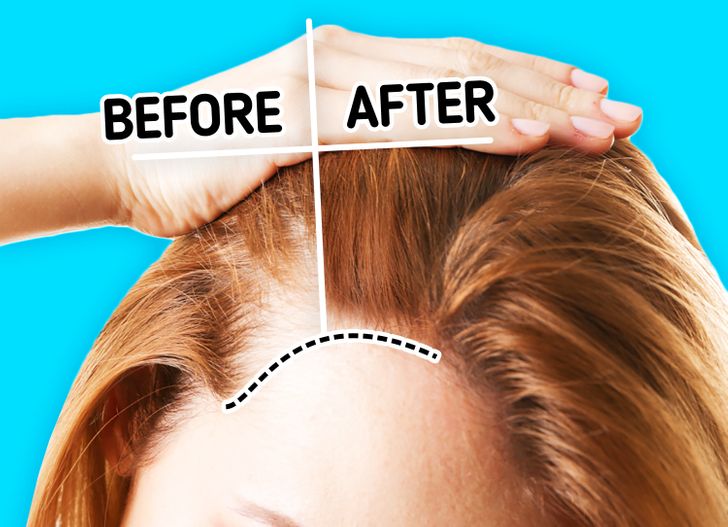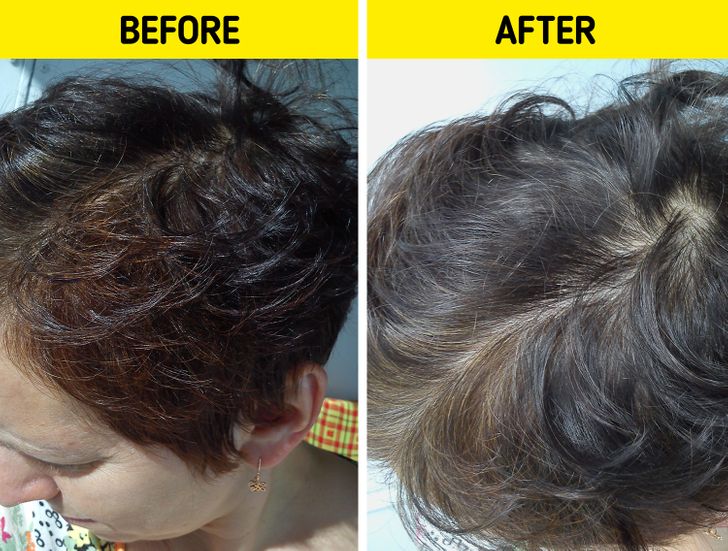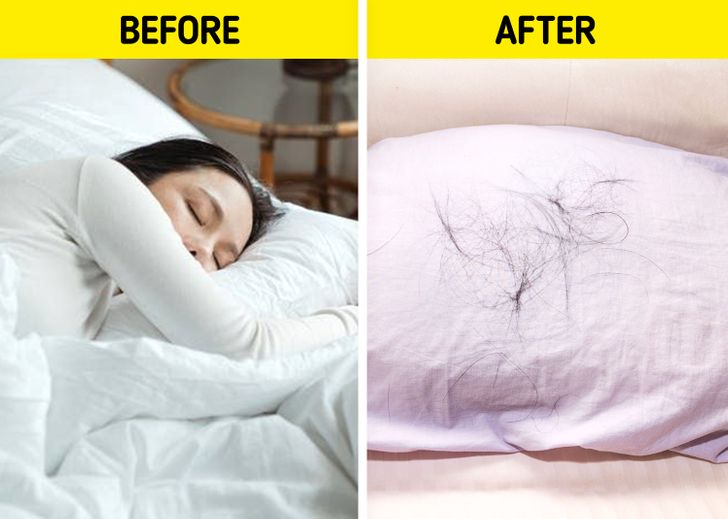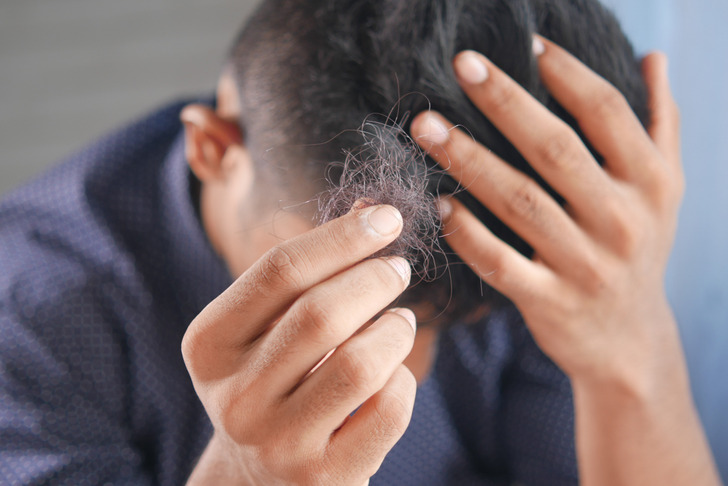I never had any of this? is this a normal thing?
Causes of Hair Loss, and 7 Ways to Tell If You’re Losing Too Much of It
We shed 50 to 100 hairs a day, and it’s normal to see a few locks on your pillow in the morning or in the drain after your shower. The amount of hair you’re losing may depend on its length and thickness, and even on the type of pillowcase you sleep on. But if you start noticing that your part looks a bit wider than normal, you may have reason to worry.
In many cultures around the globe, hair is very important because it has cultural significance and meaning. For us, it’s the same, and we may not even realize our hair makes an impression, and that’s why losing it can be very scary. We at Bright Side have searched the Internet to find science-backed ways to tell if your hair loss might be more significant than it should be.
1. Try pulling on it.
One of the ways to tell if you’re losing more hair than normal is by wrapping your fingers around approximately 60 hairs and gently pulling on them. If you’re losing the right amount of hair, no more than 3 hairs should come out.
This is a simple trick that you can apply, but don’t overuse it since constantly pulling your hair can be a cause of hair loss. Excess pulling can cause the follicles to become damaged, but some people don’t even realize they are pulling their hair so much.
2. Pay attention to how much hair is on the shower walls and drain.
It’s normal to lose some hair when you’re taking a shower, and you might also lose some more when combing it afterward. But if you’re constantly noticing a lot of hair on your bathroom floor, that could be a sign of too much hair loss.
If you want to know whether you’re losing too much hair or not, while you are shampooing your hair, try to stick all the hairs that fall in your hand on the wall so that you can count them after your shower. Always remember to wipe them off when you finish.
3. Try counting the hairs that shed.
Another way to determine if you’re losing too much hair is by brushing it for 60 seconds and counting the number of hairs that fall. Losing about 10 hairs is normal, and if that’s how many come out, you shouldn’t worry about excessive hair shedding.
To brush your hair, you should use a wide-tooth comb. You should do it gently by not pulling, and whenever possible, do it when the hair is almost dry — try not to do it while it’s wet.
4. Take a look at your ponytail.
A general drop in hair thickness is one of the signs that you might have to consult your doctor. Although you probably won’t notice it until there’s a drastic difference, it may indicate significant hair loss. Paying attention to the thickness of your ponytail can help you notice it faster.
5. Check your scalp for bald patches.
If you experience greater than normal hair shedding, you might even get a bald spot at the crown of your head. If you notice thin patches, that could be one of the first signs of potential hair-thinning. Try to check on your scalp every day if you’re suspicious that your hair is falling out more than normal.
6. Check how wide your part is.
Another indicator of excessive hair loss is a widening part. If there’s more scalp visible through the strands of your hair, that could also be a sign that you’re losing too much hair.
7. Take a look at your pillow in the morning.
It’s normal to lose 50 to 100 hairs a day when you toss and turn in your sleep, especially if you’re sleeping on a cotton pillowcase. They are known to absorb the moisture from your hair, leaving it dry and brittle. But if you start noticing a lot of hair on your pillow in the morning, that could potentially be a sign that you might be experiencing excessive hair shedding.
Fun fact: If your hair is getting damaged and becoming thinner from cotton pillowcases, you can switch to silk ones since, with this fabric, rubbing won’t happen.
Some causes for hair loss
If you’re experiencing significant hair loss and are seeking to treat it, it’s important that you talk to your doctor to identify the cause. We are going to tell you about some of the many reasons why you might be losing your hair so that you can keep an eye on it.
- Tight hairstyles, like buns, ponytails, braids, cornrows, etc. can cause damage to your hair if they are too tight and pulling it back. To prevent it from breaking and falling out, try to loosen up your hairstyle and give your hair a break and the chance to recover by wearing it naturally for a while.
- Hereditary hair loss, or, as doctors call it, androgenic alopecia, is the most common cause of hair loss in the world. It basically means that you can inherit genes that make your hair follicles stop growing hair. If you notice that your relatives, like your grandparents or parents, don’t have much hair, chances are it will happen to you too.
- Being under too much stress can cause hair loss. When we feel like we’re under pressure or live through a traumatic experience, our hair may get very thin. Most of the time, this kind of hair loss is temporary and can be stopped by passing or eliminating the stressful event that is causing it.
- Certain diseases and conditions may be the cause of hair loss. Alopecia areata, hormonal imbalance, scalp infections, psoriasis, etc. are some of those diseases or conditions. In these cases, visiting your doctor is the best option.
- Simple things, like childbirth, weight loss, and vitamin deficiencies, can also contribute to abnormal hair loss. Even friction can be an issue, like if a piece of clothing rubs against your skin.
There are many more causes of hair loss, and if you want to get an accurate diagnosis, it’s best to visit your doctor or dermatologist. They are the ones that can help you identify the problem and provide you with treatment.
Bonus: how you should wash your hair
Experts in the field gave us some tips on how we should take care of our hair while we’re in the shower, and we want to share them with you. You should gently massage your scalp with the shampoo that’s best for your hair type, and while rinsing, let the water flow through. Don’t forget to use your conditioner!
Preferably, let your hair air-dry, and don’t rub your hair with a towel. Instead, try wrapping it. We understand that when you’re in a hurry, you may need to dry your hair faster. You can use a blow dryer, but try not to use it frequently and adjust the settings to use as little hot air as possible.
We hope that all these tips can help you understand your hair a little better and know how to keep it as healthy as possible. Always try to double check with your doctor or dermatologist if you want to be really sure about anything.
Have you been noticing any of these signs? Do you know of any other ways to tell if your hair is thinning?
Comments
I have waist length hair and have been losing my hair consistently for past couple of years. I had my thyroid tested and that was okay. Doctors put it down to work related stress. I have left my job as an oncology nurse due to ill health and I must say the early retirement still hasn't stopped my hair from falling out! My husband keeps saying "it's a wonder you're not bald the amount of hair you're losing, it's worse than having a molting dog!"... thing is when I mention it to friends they can't notice anything... but I can. All these things are familiar to me, I even got a fringe cut it to hide the bald patch at the front of my hairline (I cried when the hairdresser showed me the mirror, she was devastated as she thought I hated it but it was relief and happiness as I couldn't see my bald patch anymore!) Cannot wait for lockdown to be over so I can go to hairdressers, I have always had really long hair but thinking of getting it cut shorter with layers to see if that helps.
Does anyone know what type of pillowcase is better for your hair?? All mine are cotton.
Related Reads
15+ Wholesome Pics to Prove That Love Can Be Found in Each Step We Take
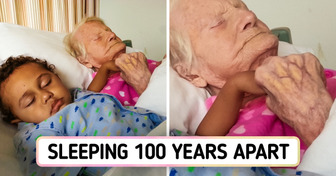
12 Wild Stories That Prove Cheating Isn’t For the Faint-Hearted
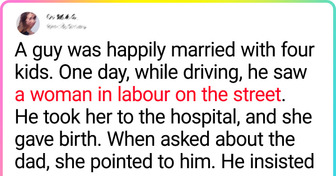
24 Stories That Prove Family Bonds Are Like No Other

14 People Whose Pranks Had an Unexpected Finale
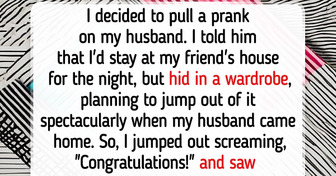
I Banned My MIL from Seeing My Baby Because She Refuses to Babysit

15 Real-Life Stories With Hard-to-Believe Plot Twists
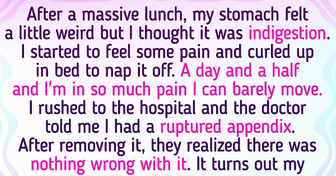
15+ Times Children Showed Their Spontaneity in Unforeseen Ways

20 Employees Share How They Left a Lousy Job Without Looking Back
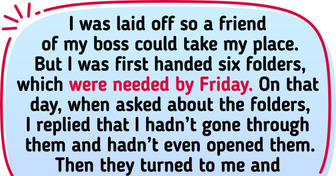
18 Stories About What Can Happen If You Decide to Adopt a Kid
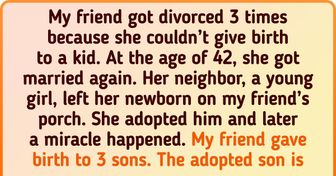
12 Single Dads Share Their Most Emotional Stories

My Baby Cries Hysterically Every Time My Mother-in-Law Is Around — I Finally Discovered Why
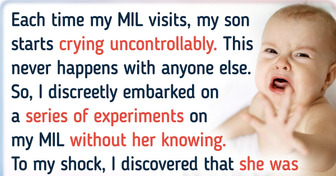
12 True Events That Prove Paranormal Is Not a Myth

